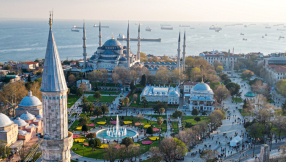
A study by St Mary’s University London has shown that since 1992 significant numbers of Anglican clergy have shifted their allegiance to Rome and have joined the Catholic Church.
1992 was the year that the Church of England controversially voted in favour of the ordination of women. The Catholic Church maintains that the priesthood is reserved for men only.
According to the research, around 700 Anglicans or members of the Scottish Episcopal Church joined the Catholic Church between 1992 and 2024. Around a third of all ordained Catholic priests ordained in the period were actually former Anglicans.
One such convert is Michael Nazir-Ali, the former Anglican Bishop of Rochester. He converted to Catholicism and was ordained in 2021, arguing that the Church of England was “losing its way”.
Nazir-Ali holds traditional views on questions of marriage, gender and sexuality, all things the Catholic Church has clear teachings on. The Church of England meanwhile is deeply divided on such questions.
Recently the Global Fellowship of Confessing Anglicans (GAFCON) said it would no longer recognise the spiritual authority of the Archbishop of Canterbury, following the appointment to the role of a liberal woman, Sarah Mullally.
Rather than defect to Rome however, GAFCON declared itself to be the legitimate Anglican Communion.
Professor Stephen Bullivant, co-author of the St Mary’s research, said there had been a clear “surge” in conversions after the introduction of female ordination.
While conceding that the defections had taken place for numerous personal reasons, the “Synod vote on women priests was a big one in the 1990s”, he told The Telegraph.
Another key event was the visit of Pope Benedict XVI to Britain in 2010. That visit saw the beatification of the 19th century churchman Cardinal Newman, who himself was formerly an Anglican priest before converting to Catholicism.
Professor Bullivant added, “Cardinal Newman is a real hero among Anglicans and Catholics. However, most of these people [converts] have a long and very personal journey.”













